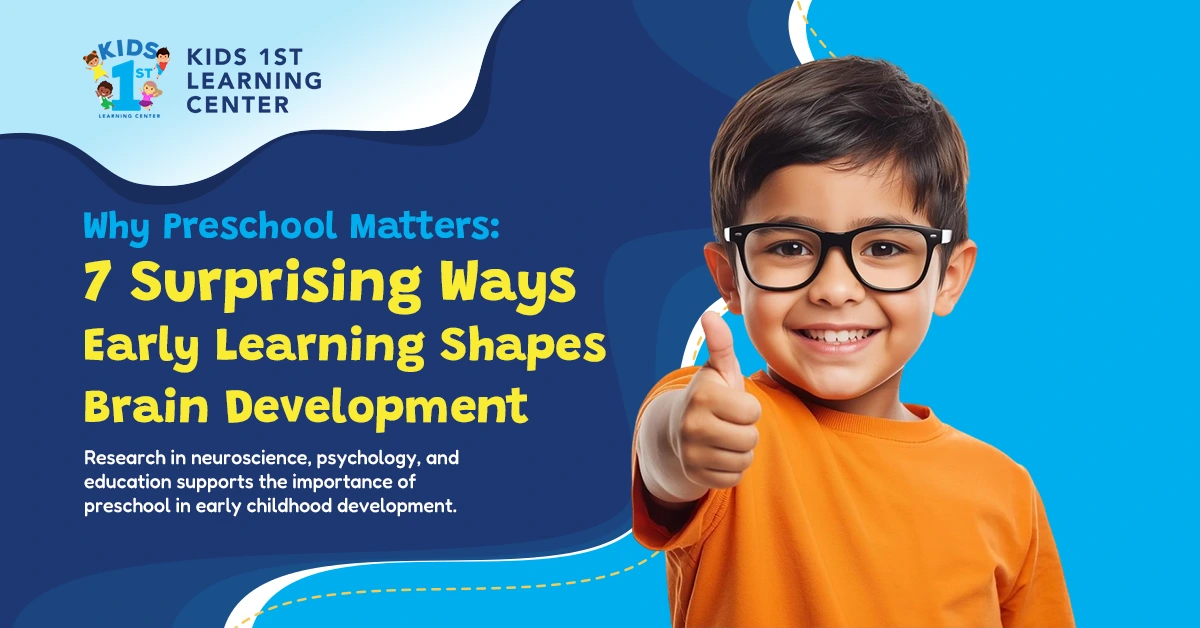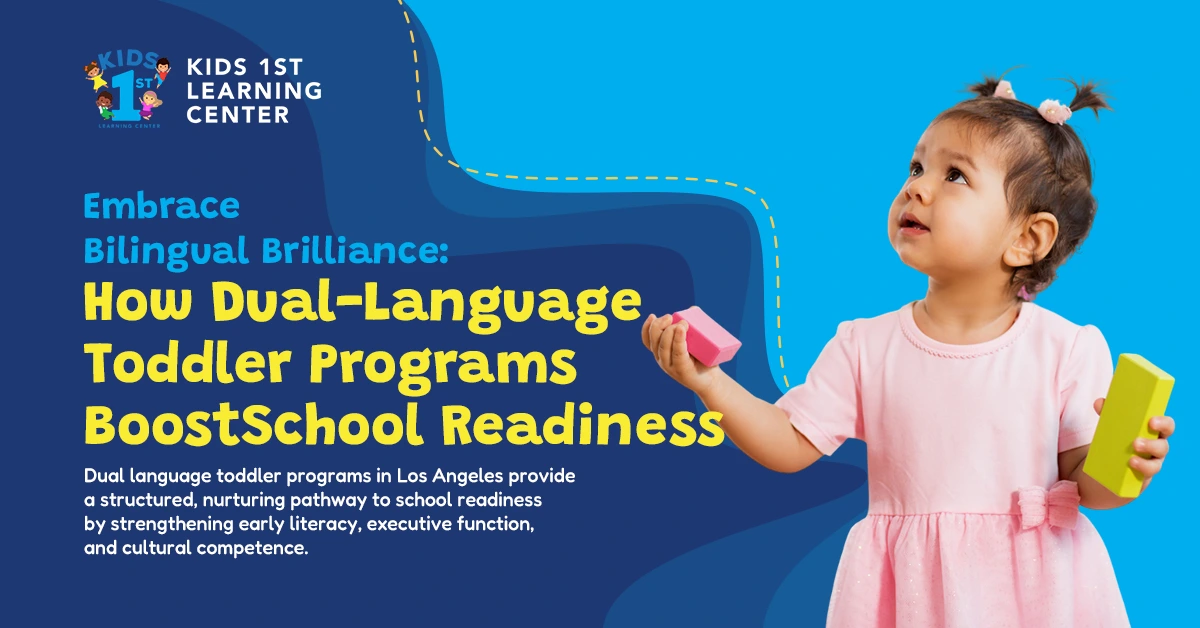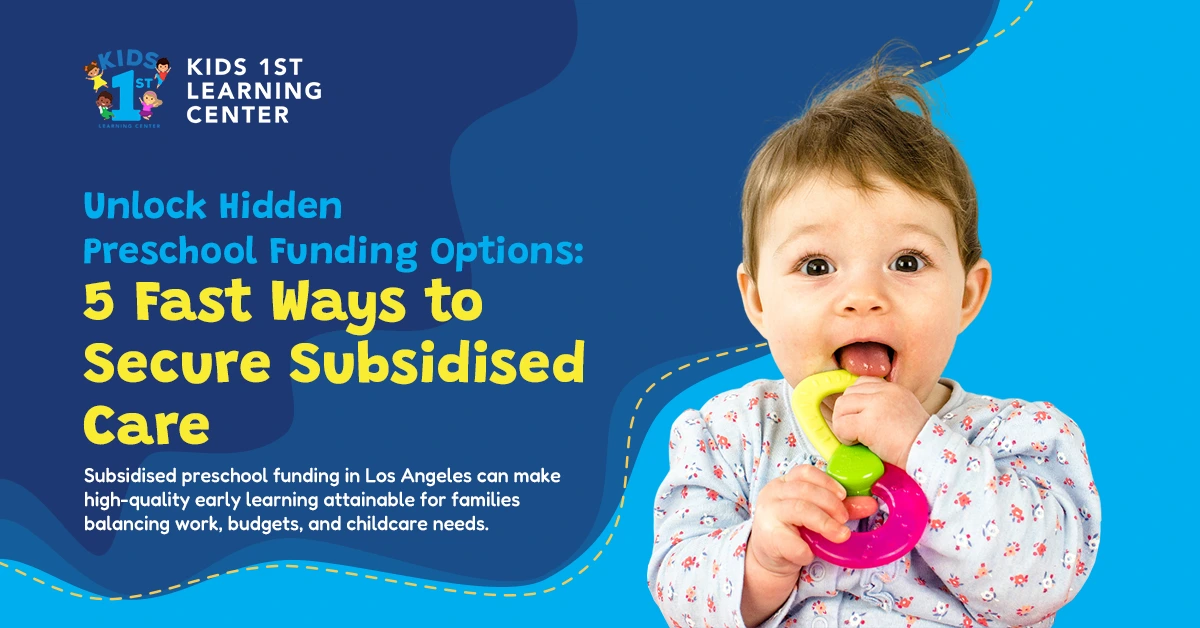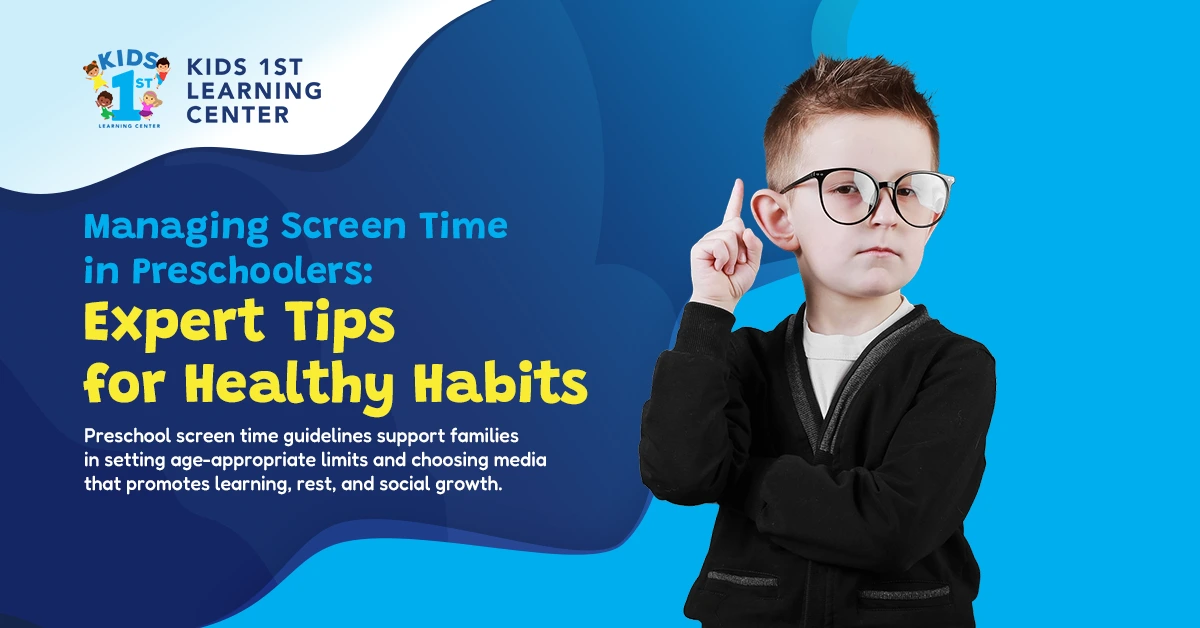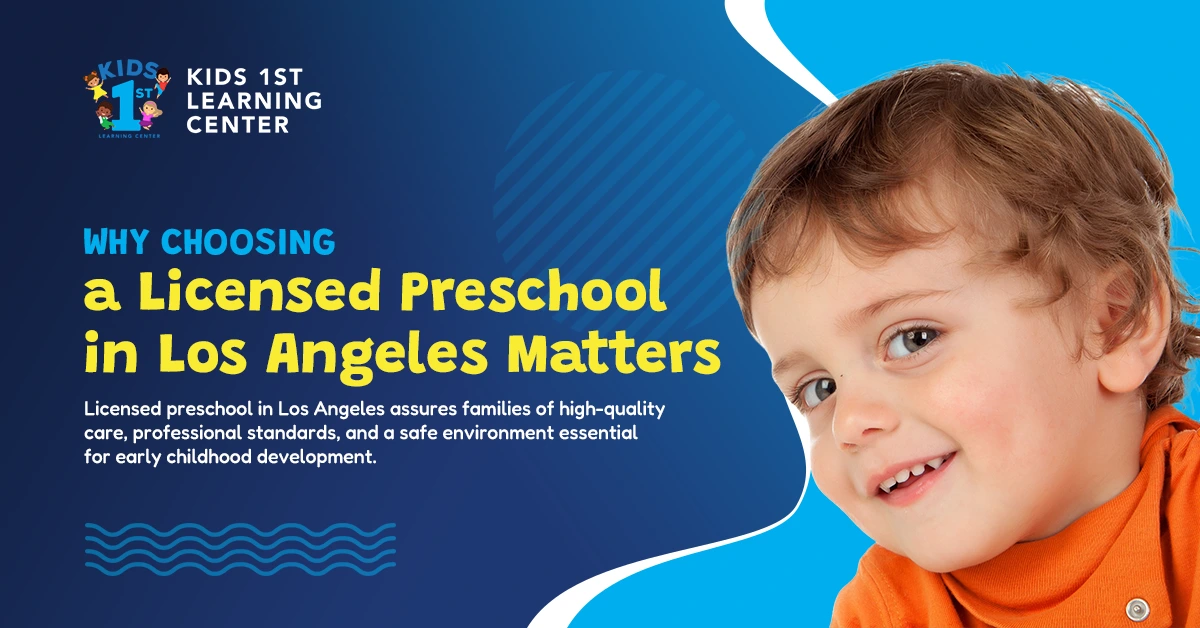Subsidised preschool funding in Los Angeles can make high-quality early learning attainable for families balancing work, budgets, and childcare needs. Yet the landscape of programs, eligibility rules, and application timelines can feel complex. This guide highlights fast, practical steps to locate support and move from interest to approval with minimal delays.
Families will learn to confirm eligibility, compile the proper documents, connect with local resource and referral agencies, prioritize programs that match their schedule, and effectively monitor waitlists. With a focused plan, parents can secure a stable preschool placement that supports development, nurtures confidence, and protects the family’s finances throughout the year.
Confirm Eligibility and Priority for LA Preschool Subsidies
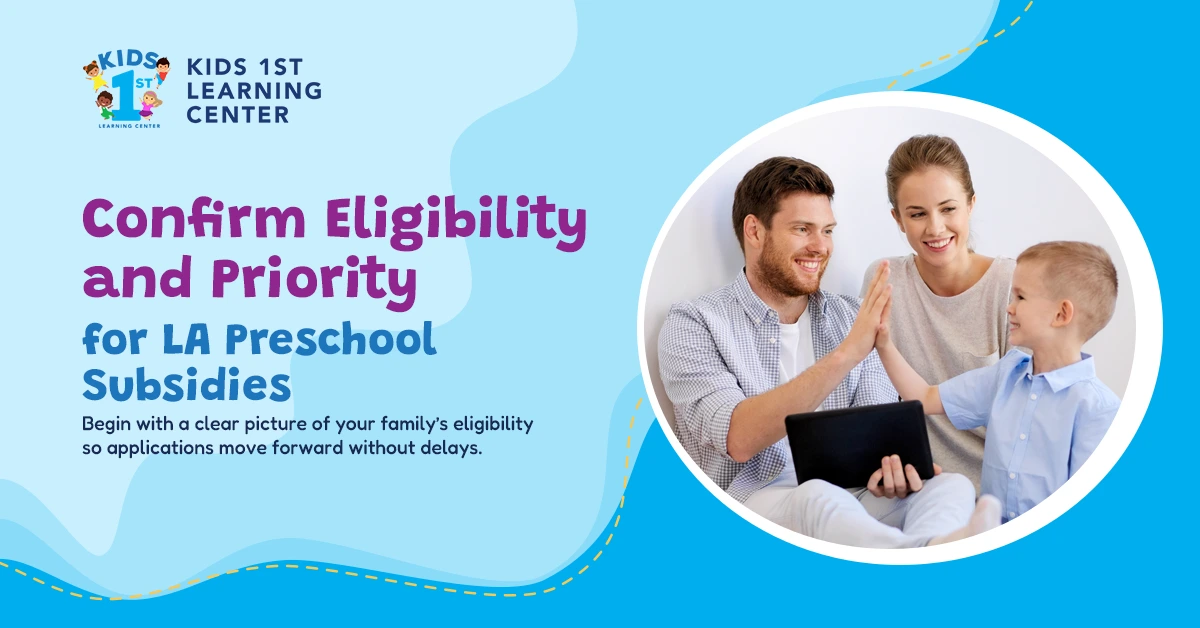
Begin with a clear picture of your family’s eligibility so applications move forward without delays. Verify age, residency, income, and need for services, and gather proof that supports each requirement. Organize documents by category and date to streamline reviews.
Eligibility Basics
Start by confirming baseline requirements used across public programs. Careful preparation here prevents rework and resubmissions.
- Age & Residency: The child meets the program’s age band and lives in Los Angeles County.
- Income Limits: Household earnings fall within current state guidelines for family size.
- Documentation Basics: IDs, proof of address, birth certificate, and immunization record are current.
Date each file and keep copies together in a single folder. Accurate basics reduce processing times and help staff verify information quickly.
Priority Factors That Expedite Placement
Some families qualify for priority placement based on circumstances that elevate need. Identifying these factors early supports faster matching to available state-funded preschool spots.
- Foster/Homelessness: Active foster status or verified housing instability from a service agency.
- Disability Services: IFSP/IEP or specialist evaluation documenting identified needs.
- Family Circumstances: Sibling enrolled at the site, teen parent, or very low income.
Provide official letters or court documents where applicable. Clear proof strengthens the file and helps programs meet mandated service priorities.
Verifying Need for Services
Programs allocate hours based on demonstrated need from employment or education schedules. Align requested hours with reliable, current documentation.
- Employment: Recent pay stubs, an employer letter with days and hours, or a posted schedule.
- Education/Training: Enrollment verification plus class schedule or academic calendar.
- Variable/Self-Employment: Employer note on fluctuating shifts, invoices, ledger, or recent tax statements.
Ensure the number of hours requested matches the evidence provided. Keep weekly schedules for all guardians available for review, and update the file promptly if work or class times change.
Find State-Funded Preschool Spots Across Los Angeles County
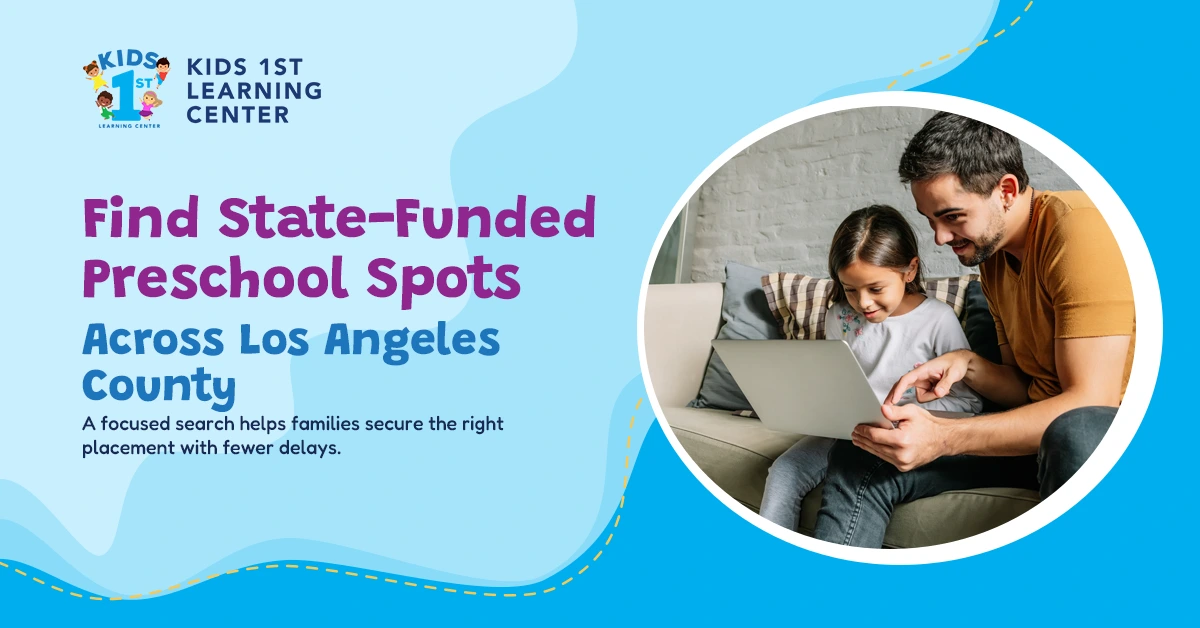
A focused search helps families secure the right placement with fewer delays. Begin by mapping available program types to your child’s age and weekly schedule. Then, verify openings and documentation requirements before submitting applications.
Understand Program Types and Funding Models
Clarify which publicly funded options align with your needs before calling sites. This prevents avoidable reapplications.
- CSPP Part/Full Day: Offers instructional hours with defined calendars and eligibility rules.
- Head Start/Early Head Start: Provides education, family services, and health supports.
- Blended Funding: Some sites combine sources to extend hours or reduce family costs.
Ask each provider to explain the covered hours, any co-pays, and how attendance is tracked. A written summary helps you compare sites accurately.
Leverage Resource and Referral Networks
Local agencies can filter live openings by age, hours, and neighborhood. They can also request tailored guidance and confirm document checklists.
- Curated Lists: Age-appropriate sites prioritized by proximity and schedule fit.
- Capacity Signals: Notes on current vacancies, upcoming turnover, and waitlist movement.
- Enrollment Support: Multilingual assistance, paperwork review, and appointment scheduling.
Document the names, dates, and notes from each call. Organized records speed follow-ups and reduce duplicate questions during intake.
Match Sites to Schedule, Location, and Capacity
Choose programs that support consistent attendance and predictable transportation. Verify details that impact daily routines.
- Commute Fit: Locations near home, work, or along reliable transit corridors.
- Hours & Meals: Operating times, early drop-off/late pickup, and meal service availability.
- Staffing & Ratios: Licensed capacity, teacher qualifications, and backup coverage plans.
Close the loop by asking about closure calendars, illness policies, and required re-determinations. Aligning logistics with documented need strengthens placement stability and supports your child’s daily learning.
Apply for Preschool Financial Aid LA: Documents and Timelines
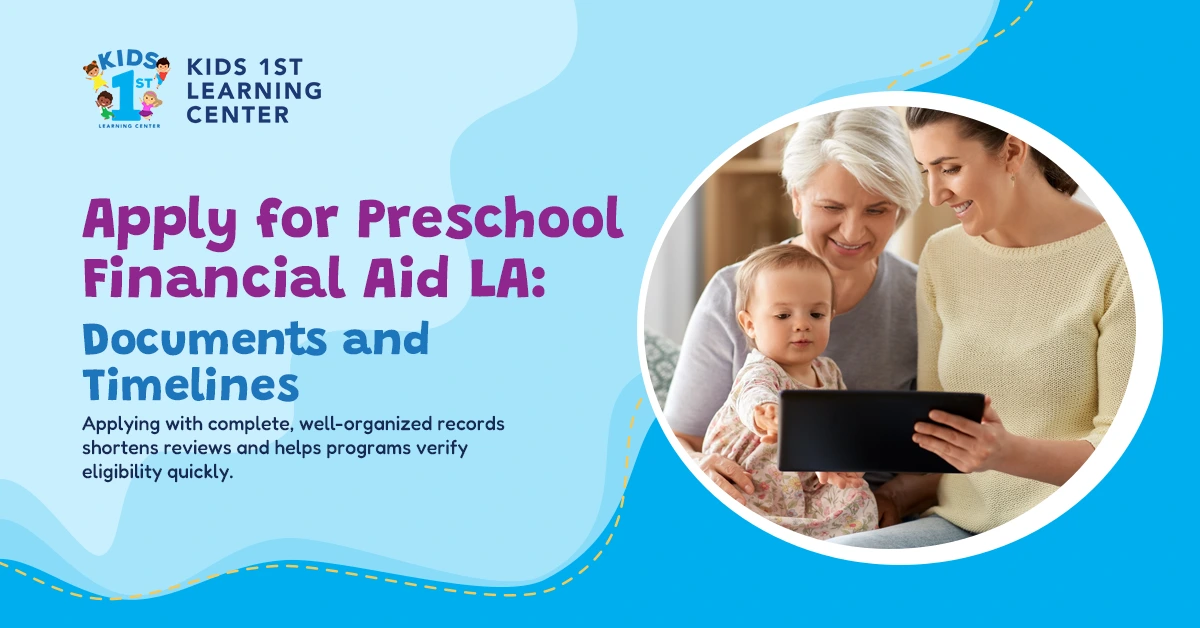
Applying with complete, well-organized records shortens reviews and helps programs verify eligibility quickly. Timelines vary by season and funding stream, so prepare early and track every step. Clear documentation and consistent follow-up support faster placement and stable start dates for your child.
Core Documents to Prepare
Assemble originals and copies, date-stamp them, and keep everything in one folder. Organized files reduce resubmissions and prevent avoidable delays during intake.
- Identity & Residency: Government-issued ID plus proof of current Los Angeles address.
- Child Records: Birth certificate, immunization card, and recent health exam.
- Income Verification: Four weeks of pay stubs or employer letter; benefits statements if applicable.
- Need for Services: Work schedule, class schedule, or training enrollment verification.
Scan to PDF and label files with clear names and dates. If you apply broadly, consistent formatting supports faster review across multiple sites.
Submission Steps and Accuracy
Follow structured steps to maintain accuracy and meet site-specific requirements. A precise, legible packet protects your place in line.
- Complete All Fields: Avoid blanks; use “N/A” where not applicable.
- Rank Site Preferences: List several eligible programs that match your hours.
- Attach Proof Clearly: Use dated filenames and initial pages if the program requests them.
- Double-Check Signatures: Ensure all guardians sign every required form.
Confirm each site’s checklist before delivery. Keep a complete photocopy or PDF set for renewals and any appeal or transfer.
Typical Review Timelines and Follow-Up
Processing durations depend on capacity and season; monitor progress and respond promptly to requests.
- Initial Review: Often 5–15 business days for document screening.
- Eligibility Interview: Scheduled to clarify hours, income, or custody details.
- Waitlist Movement: Highest near semester transitions; ask for historical ranges.
- Approval & Start Date: Contingent on capacity and completed health forms.
Set weekly reminders to check status, submit updates, and confirm availability. Timely communication helps align approved hours with your family’s schedule.
Leverage Local Resource and Referral Agencies for Personal Guidance
Local resource and referral agencies provide structured, unbiased guidance from the first call through enrollment. Their counselors match your needs to funded options, clarify documentation, and help you plan next steps with confidence.
Targeted Intake and Eligibility Screening
Begin with a short intake to confirm age, residency, income, and service needs. This will prevent avoidable reapplications and focus your search on eligible sites.
- Eligibility Snapshot: A counselor reviews income, family size, and schedules to verify subsidy fit.
- Priority Check: Staff identify foster, homelessness, or special needs priorities that may expedite placement.
- Document Map: You receive a checklist tailored to your situation and preferred program types.
Leave the call with precise action items and a list of programs aligned to your documented profile.
Navigation Support and Paperwork Preparation
Agencies offer practical help that turns requirements into a complete application packet. Use their tools to reduce errors and speed reviews.
- Multilingual Assistance: Interpreters clarify forms and provider policies to prevent misunderstandings.
- Paperwork Review: Staff check dates, signatures, and consistency across pay stubs, schedules, and IDs.
- Scheduling Help: Coordinators arrange eligibility interviews and site tours within your available hours.
Organized, verified paperwork allows programs to confirm eligibility quickly and reserve appropriate hours.
Ongoing Placement Strategy and Follow-Up
Maintain momentum after submission by coordinating status checks and updates. Agencies help you adapt when availability shifts.
- Waitlist Monitoring: Counselors track movement and advise when to add or adjust site choices.
- Status Log: You receive a follow-up cadence and template to document all contacts and responses.
- Change Management: Staff guide updates when income, employment, or custody circumstances shift.
Consistent follow-through, anchored by agency support, strengthens placement stability and aligns hours with your family’s routine.
Maximize Your Waitlist Strategy and Secure Placement Quickly
Waitlists move regularly across Los Angeles County, especially around semester transitions. A structured approach helps families turn movement into confirmed starts. Use the steps below to signal readiness and respond quickly to openings.
Prioritize High-Fit Sites
Begin by ranking sites that closely match your schedule, commute, and child’s needs. Focus effort where acceptance would be sustainable.
- Schedule Match: Hours align with verified work or training, including required drop-off and pickup windows.
- Commute & Care: Location fits daily routes, and sibling placement or continuity options are available.
- Program Fit: Curriculum, ratios, and calendar support consistent attendance and developmental goals.
Concentrating on high-fit options reduces midyear transfers and improves the likelihood of a timely offer.
Maintain Proactive Follow-Ups
Consistent, respectful follow-up keeps your file visible without overwhelming staff. Use a predictable cadence and track every contact.
- Set Intervals: Check status every 7-10 days after known transition dates.
- Contact Record: Log date, staff member, guidance received, and next steps for each site.
- Polite Updates: Report changes in hours, address, or phone immediately to maintain eligibility.
When movement occurs, ask about response windows and preferred communication channels so you can reply within minutes.
Keep Files Current for Rapid Offers
Offers move quickly, and incomplete files stall placements. Keep documents current and readiness steps complete.
- Document Refresh: Replace expiring pay stubs, health forms, and immunizations before they lapse.
- Verification Packet: Maintain a labeled PDF set to email or upload upon request.
- Starter Logistics: Arrange backup pickups, establish childcare routines, and confirm medical clearances.
Prepared families accept openings immediately, allowing programs to finalize enrollments and set start dates without delay.
Conclusion
A structured plan helps families confidently move from research to a confirmed start. By verifying eligibility and priority, targeting state-funded openings, submitting complete documentation, partnering with resource and referral agencies, and proactively managing waitlists, you align support with your schedule and your child’s developmental needs. When these steps are coordinated, subsidised preschool funding in Los Angeles becomes a practical path to stable care and consistent early learning.
For personalized enrollment guidance with Kids 1st Learning Center, call (818) 873-0133 or visit https://kids1st.org/contact-kids-1st/.

